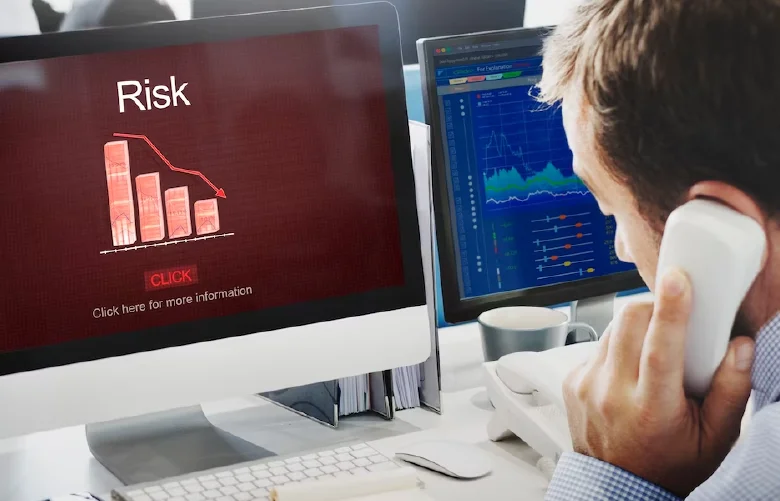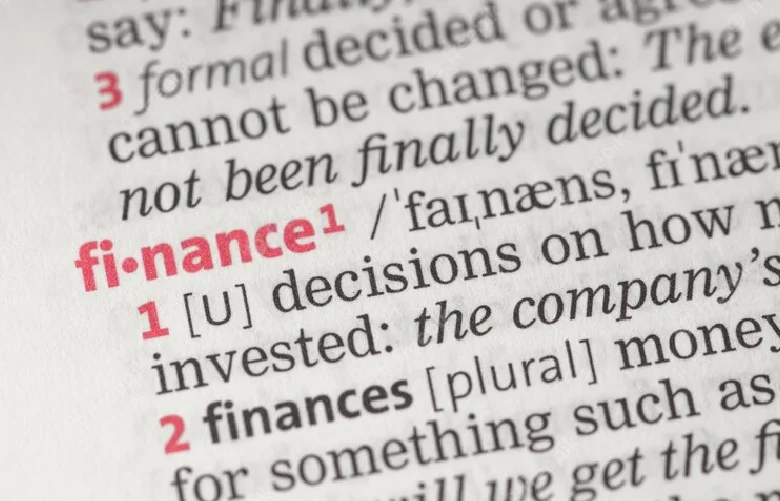Financial risk is a major concern for businesses in different industries all over the world. That’s why the demand for financial risk analysis professionals is rising at an unprecedented scale. It ensures that companies can identify the different types of financial risks and take the right initiatives to control them. But what is financial risk? Dive into this article to learn about financial risk, the different types of financial risk, and more.
What Is Financial Risk?
The possibility of losing money on a business or investment decision is referred to as financial risk. Individuals and corporations might suffer capital losses as a result of financial risks. Credit, liquidity, and operational hazards are examples of financial risks.
In the event of a financial risk, it is possible that a company’s cash flow would be insufficient to meet its obligations. Financial risk in government sectors signifies the failure to control monetary policy and other debt issues. Depending on the types of financial risk, the impact on the market can be pretty severe.

Identifying financial risks is crucial to mitigate them on time. The objective of financial management is to handle financial risks efficiently to avoid extreme damage. You should also learn about the scope of financial management in detail.

Get curriculum highlights, career paths, industry insights and accelerate your technology journey.
Download brochure
The Impact of Financial Risks on Markets
Financial markets are associated with several types of financial risk. A variety of factors can have an impact on the financial market. When a critical sector of the market suffers, the financial well-being of the entire market gets affected. Businesses close, investors lose fortunes, and governments are compelled to reconsider their monetary policy during a financial risk period.
Volatility creates concern about the fair value of market assets. Volatility, as a statistical indicator, represents stakeholders’ confidence that market returns correspond to the true valuation of specific assets and the economy as a whole. This statistical measure, presented as implied volatility (IV) and stated as a percentage, reveals whether investments are bullish or bearish. Shares of stock might experience large price changes due to volatility or equity risk.
Financial risk can also be posed by default and changes in market interest rates. Defaults occur mostly in the debt or bond markets when firms or other issuers fail to meet their debt obligations, causing investors to suffer. Changes in market interest rates can make particular assets unprofitable for investors, requiring them to choose between lower-paying debt instruments and negative returns.
The danger that asset-backed securities will become volatile if the underlying securities vary in value is referred to as asset-backed risk. Subcategories of asset-backed risk include the borrower repaying debt early, halting the income stream from repayments, as well as major changes in interest rates.
Types of Financial Risks
Once you are familiar with what is financial risk, you will have to learn about the different types of financial risk. The different types of financial risk are as follows:
Market risk arises due to fluctuations in the prices of various financial instruments. Market risk can be either directional or non-directional. Directional risk occurs due to fluctuations in interest rates, stock prices, and more. Non-directional risks can be defined as volatility risks.
A credit risk occurs when someone is unable to fulfill their debt obligations. Credit risk can be sovereign or settlement risk. Sovereign risk occurs due to difficult foreign exchange policies. Settlement risk happens when one party is making payments while the other party fails to satisfy their obligations.
A liquidity risk refers to the inability to carry forward transactions. Liquidity risks can be in terms of funding or assets. Asset liquidity risk occurs as a result of insufficient buyers or sellers against sell or buy orders.
An operational risk occurs due to technical issues or mismanagement. Operational risk can be divided into fraud risk and model risk. Fraud risk occurs due to a lack of controls. Model risk is a product of inaccurate model application.
Any financial risk occurring due to legal constraints, like lawsuits, can be classified as legal risk. A legal risk occurs when a company experiences monetary loss due to court proceedings.
Understand the functions of financial management.
Pros and Cons of Financial Risk
The different advantages of financial risk are as follows:
- Contributes to more informed decisions
- Helps with evaluating the risk-reward ratio
- Can be easily identified using different analysis tools
The different disadvantages of financial risk are as follows:
- Occurs due to unpredictable external factors
- Can be difficult to control or overcome
- Might affect different sectors or markets
Understand the advantage of financial risk management.
Example of Financial Risk
Several businesses have taken significant financial hits. Toys “R” Us closed in June 2018 after declaring bankruptcy in September 2017. The CEO of the company also stated that the company was collaborating with creditors to restructure the $5 billion in long-term debt. According to estimates, much of the company’s financial risk stems from a $6.6 billion leveraged buyout in 2005 by investment companies KKR & Co., Bain Capital, and Vornado Realty Trust.
Toys “R” Us declared in March 2018 that it would liquidate all 735 US shops to alleviate the financial strain caused by a disappointing holiday season. It also had trouble selling its properties. This scenario exemplifies the liquidity risk associated with real estate.
Angelo Gordon and Solus Alternative Asset Management took control of the bankrupt company in November 2018 and formulated plans to resurrect the network. Tru Kids Brands, a new firm founded by ex-Toys “R” Us executives, said in February 2019 that it would relaunch the brand and launch two new stores that year. Macy’s recently teamed with WHP Global, and the two companies are working together to revive the Toys “R” Us brand.
Some tools that help control financial risk are as follows:
- Fundamental Analysis: It helps measure the intrinsic value of a security. It can evaluate different aspects of underlying businesses, like the total earnings and assets of a company.
- Technical Analysis: This method involves using statistics to assess securities. It takes into account historical returns, trade volumes, share prices, and other performance data.
- Quantitative Analysis: It involves assessing the historical performance of a company with the help of financial ratio calculations.
- Statistical and Numerical Analysis: It can help identify potential financial risks with the help of statistical methods.
Learn how to become a financial analyst
How to Identify Financial Risks?
The following methods can help with the identification of financial risks:
- Taking into account the potential risk factors of a company
- Reviewing corporate balance sheets
- Evaluating statements of financial positions
- Spotting weaknesses within the operational plans of a company
- Comparing the performance of the company with other companies in the same industry using specific metrics
- Utilizing statistical analysis to identify the different risk areas of a company
After identifying financial risks, the next step is financial analysis. But what is financial analysis? It involves understanding the impact of the different risk factors on the company and developing a plan to mitigate them.

Want to efficiently identify financial risks and mitigate them? Learn about the skills to become a financial manager. You should also gain knowledge about the roles & responsibilities of a financial manager.
Conclusion
The types of financial risk will be different for each company according to the operations they perform. But every company needs a financial risk management team for the timely identification and mitigation of financial risks. You can enroll in relevant financial management courses & certifications to learn more about it and build a stable career.
FAQs
Financial risk is triggered by market movements which include multiple factors. According to the different market movements, financial risks can be classified into credit risk, operational risk, liquidity risk, market risk, and legal risk.
While understanding what is financial risk, you also need to know about financial risk analysis. Financial risk involves identifying the chance of a threat and its potential impact.
Financial risk revolves around the chance of losing money on a business investment or venture. If you want to know what is financial risk, you should also know about the different types of financial risk.
Understanding, assessing, and managing financial risk is crucial for an organization's long-term performance. Financial risk can prohibit a corporation from meeting its financial objectives, such as making timely loan payments, carrying an appropriate amount of debt, or supplying goods on schedule. Understanding what financial risk and its causes is and implementing measures in place to mitigate it will lead to improved company performance and higher yields.
Identifying financial risks entails taking into account the risk elements that a company faces. It includes evaluating business balance sheets and financial accounts, identifying flaws in the company's operational plan, and comparing data to other companies in the same industry. Several statistical analysis techniques are utilized to determine a company's risk regions.
Updated on December 18, 2024










